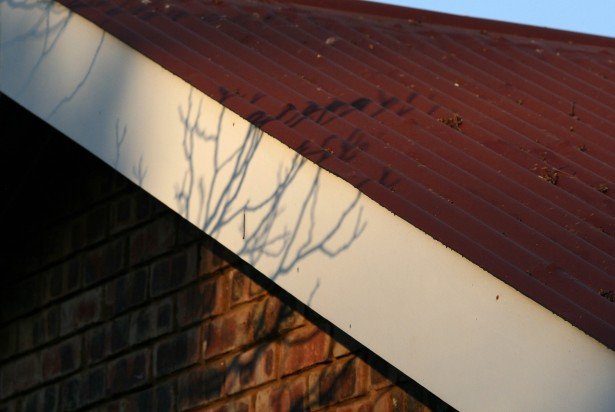How Can Bats Get Into My Attic?

Bats gain access to homes by squeezing through cracks in the roof. Many bat species have the ability to squeeze their bodies through gaps as small as a dime! They can either roost in walls or continue crawling until they reach the attic after finding these gaps. 1Go To Source dph.illinois.gov -“Bats and Bat Exclusion”
To keep bats out, you’ll need to find and close the gaps they use to get in. Bats can enter a home through a variety of openings, including those in the roof. You’ll need to keep a close eye on each of these access points if you want to keep bats out. The following are the most common ways bats gain access to people’s homes:
Learn More: Bat Removal FAQ
Uncapped Chimneys
 Chimneys are notorious for being popular bat roosts. Bats prefer to fly inside because it is warm, safe, and convenient. Once inside, they may make permanent homes in chimneys and even raise their young there. They could also fall down your chimney and into your house. 2Go To Source mass.gov -“Bats in the home”
Chimneys are notorious for being popular bat roosts. Bats prefer to fly inside because it is warm, safe, and convenient. Once inside, they may make permanent homes in chimneys and even raise their young there. They could also fall down your chimney and into your house. 2Go To Source mass.gov -“Bats in the home”
Chimney covers are perfect for keeping the critters out. They are designed to fit over the top of a chimney and keep animals out while allowing air to flow freely. Chimney covers, like vent covers, will need to be replaced from time to time. Bats can easily work their way through damaged covers. Contact Animals Happen to get in touch with a wildlife expert that can install bat-proof chimney covers.
Damaged Roof & Shingles
Damaged roofing can be a difficult barrier to overcome. If the problem stems from a ceiling in a seldom-used attic, you may find it difficult to notice a bat colony in time. Even if your ceiling or roof appears to be in good condition at first glance, keep in mind that a hole as small as 6mm by 12mm can allow bats to enter. In this case, hiring a professional nuisance animal control company to caulk the cracks and “bat-proof” your home is a good idea.
Plastic Vents
Bats are known to enter homes through vents, which is one of the most common sources of information. Some ridge vents, gable vents, and box vents are made of plastic, which isn’t ideal for keeping determined bats out of your home.
For example, if you have gable vents, they must be screened. Protective cover made out of steel proves effective against bats. Bat control experts pre-qualified by Animals Happen can conduct a thorough inspection of weak points and install steel wiring covers that will protect against a bat infestation.
Weakened Fascia Boards

Your home most likely has a fascia, even if you haven’t noticed it. A fascia is a continuous board that connects the roof’s edges to the house’s exterior walls. This simple device is responsible for supporting the final rows of shingles and rain gutters.
Fascia boards are one of the most exposed parts of a structure to the elements. Summer heat, rain, and freezing temperatures in the winter can cause fascias to rot and deteriorate in a matter of years.
These components become easily accessible housing solutions for bats looking for a place to roost. A wildlife control expert can examine your fascia board for bat entry and make the necessary repairs to prevent future nuisance animals from entering.
How Can I Prevent Bats From Entering My Attic?
To keep bats out of your attic, potential openings need to be sealed or repaired with high-quality materials, vents/screens equipped with protective metal covers, and holes should be filled with caulk. Identifying weak points and completing repairs is nearly impossible for standard homeowners. Animals Happen’s qualified wildlife control technicians are professionally trained to identify these points and make repairs that will last for years. Rather than taking a risk, you can rely on the bat exclusion experts to protect your home. 3Go To Source ipm.ucanr.edu -“bats”
Sources:
- “Bats and Bat Exclusion | IDPH.” Dph.Illinois.Gov, dph.illinois.gov/topics-services/environmental-health-protection/structural-pest-control/bats-exclusion. Accessed 14 July 2021.
- Commonwealth of Massachusetts. “Bats in the Home.” Mass.Gov, www.mass.gov/service-details/bats-in-the-home. Accessed 14 July 2021.
- “Bats Management Guidelines–UC IPM.” Ipm.Ucanr.Edu, Mar. 2021, ipm.ucanr.edu/PMG/PESTNOTES/pn74150.html.
